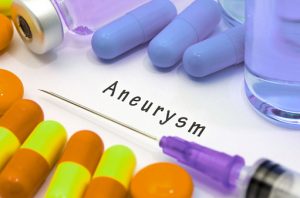
Changes in the female hormone estrogen have been shown to play a role in cerebral aneurysm, as this form of aneurysm is more common in women than men. Changes in estrogen often occur during menopause. If a woman experiences menopause early on in life, her risk of cerebral aneurysm increases.
The findings are based on 76 post-menopausal women who had a cerebral aneurysm that did not rupture in many of the cases. The women were also quizzed about their reproductive and medical history.
High blood pressure, diabetes, high cholesterol, and hypothyroidism can increase the risk of stroke. Number of pregnancies can affect estrogen levels over a lifespan.
The information from the women was compared to over 4,500 participants.
Women who experienced menopause later in life and who underwent hormone replacement therapy were better protected against cerebral aneurysm, risk reduction by 21 percent and 77 percent respectively.
Early menopause – prior to the age of 40 – occurred in one in four women with cerebral aneurysm, compared to one in five women in the control group.
For every additional four years in age, the risk of cerebral aneurysm reduced by 21 percent.
Smoking was not found to affect cerebral aneurysm risk, but there was a slight association with alcohol consumption.
The authors concluded, “Loss of estrogen earlier in a woman’s life may contribute to the [development] of cerebral aneurysm. These data may identify a risk factor for [the development of this condition] and also a potential target for future therapies.”
Brain aneurysm signs and symptoms
Signs and symptoms of brain aneurysms often occur only once the aneurysm has ruptured. Unruptured aneurysms occasionally lead to symptoms including loss of vision or double vision, pain above or around the eyes, numbness or weakness of the face parts, difficulty speaking, headaches, loss of balance, difficulty concentrating, and problems with short-term memory.
Symptoms of a ruptured aneurysm include feeling sick or being sick, stiff neck or neck pain, light sensitivity, blurred or double vision, sudden confusion, loss of consciousness, seizures, and weakness on one side of the body or in any limb.
Although an unruptured aneurysm isn’t a medical emergency as it often won’t rupture, it’s still important to see your doctor when symptoms present themselves in case treatment is required. A ruptured aneurysm, on the other had, is very severe, and medical intervention must take place immediately in order to ensure the survival and to minimize the risk of complications.
Related Reading:
Abdominal aneurysm treatment improved with virtual reality images
Virtual reality images can now be used to help improve treatment of abdominal aortic aneurysms due to a technology developed by a group of experts at the University of Montreal Hospital Research Centre. Abdominal aortic aneurysms are serious. If you have an abdominal aortic aneurysm, it means the lower part of your aorta is enlarged. The aorta is the major blood vessel supplying blood to the body. Continue reading…
Cardiac sarcoidosis raises arrhythmia and heart failure risk
Cardiac sarcoidosis raises arrhythmia and heart failure risk. Only a small number of people are affected by cardiac sarcoidosis, an inflammatory condition that can affect other organs as well. Cardiac sarcoidosis specifically targets the white blood cells in the heart tissue. These blood cells form clusters, which can then interfere with the heart’s electrical system, leading to irregular heartbeats – arrhythmia. Continue reading…
Sources:
https://www.sciencedaily.com/releases/2012/06/120611193630.htm
http://www.nhs.uk/Conditions/Aneurysm/Pages/Symptoms.aspx